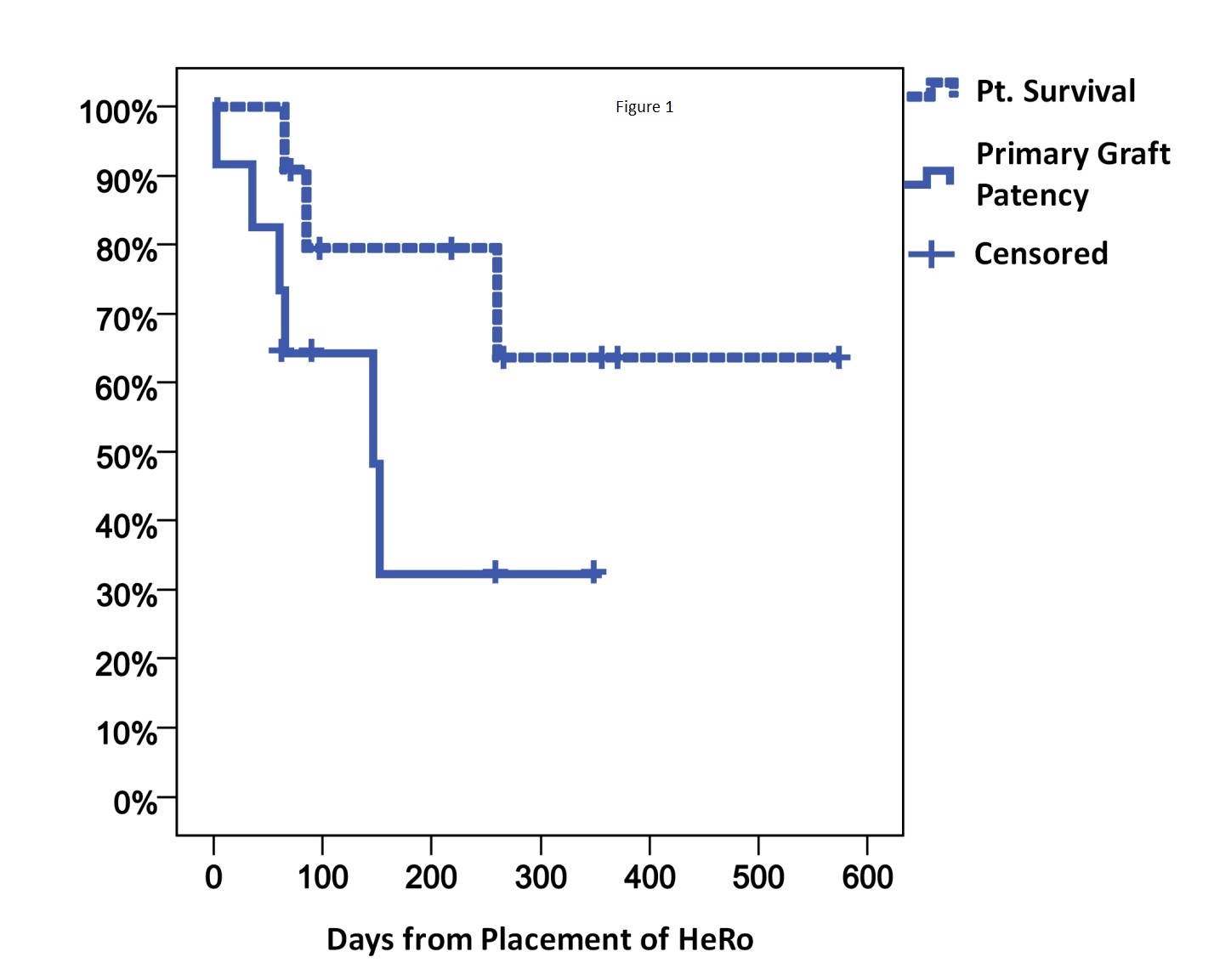Back to Annual Meeting Posters
HeRo Catheter - A new option for Superior Vena Cava Occlusion and Catheter Dependent Dialysis Patients
Kathryn L Davis, John C. Gurley, Daniel L Davenport, Eleftherios S. Xenos
University of Kentucky, Lexington, KY
Background: Hemodialysis (HD) patients with superior vena cava (SVC) occlusion have limited access options. Femoral access is commonly employed but is associated with high complication rates. HeRO (Hemodialysis Reliable Outflow) catheters are used in tunneled catheter dependent (TCD) patients who have exhausted other access options. To our knowledge, all previously reported HeRo outcomes were for central vein stenosis, not occlusion. We review our experience with this system in patients with SVC occlusion.
Methods: We placed HeRO catheters in eleven TCD patients with SVC occlusion using a unique inside-out central venous access technique (IOCVA) to cross the occlusion. The IOCVA is accomplished by accessing the common femoral vein and directing a transseptal needle through the occlusion of the SVC, exiting posterior to the head of the right clavicle. This provides direct access to the right atrium over which a catheter can be placed.
A retrospective chart review of these eleven patients was conducted. All patients had multiple failed access procedures and were receiving dialysis through a femoral tunneled catheter. Patency data, comorbidities, demographics and etiology of renal failure were recorded. Results are presented as mean, SD(standard deviation).
Results: Eleven HeRo grafts were placed in patients with SVC occlusion using the IOCVA technique between January 2012 and June 2013. Average age was 54.4 (SD 16.4 y). Six were male and five female. Six were Caucasian and five African American. Seven had diabetes. Eight had coronary artery disease. Etiologies for renal failure besides diabetes included lithium toxicity, focal segmental glomerulosclerosis (FSGS), polycystic kidney disease (PCKD), lupus, and hypertension. Median follow-up was 218 days, range 65-573 d.
The most frequent reason for graft failure was steal syndrome (3 grafts). These 3 patients were not candidates for revision and the grafts were ligated. Figure 1 depicts the primary graft patency and survival during the follow up period. The patency curve includes the three ligated for steal syndrome. Two grafts were lost due to thrombosis. One had 146 days of primary patency, 21 days of secondary patency and occluded a third time 12 days after the second thrombectomy. The second had 60 days of primary patency and less than one day of secondary patency. Following thrombosis or ligation of the graft these patients were again dependent on a tunneled catheter for hemodialysis. Six grafts were used for HD at the end of the follow- up period.
Conclusion: Our results indicate that the subgroup of patients with SVC occlusion have a poor prognosis. The HeRO device offers a solution to a complex, growing problem of providing HD access to catheter dependent patients with central vein occlusion. Steal syndrome and thrombosis are leading causes of failure. 
Back to Annual Meeting Posters
